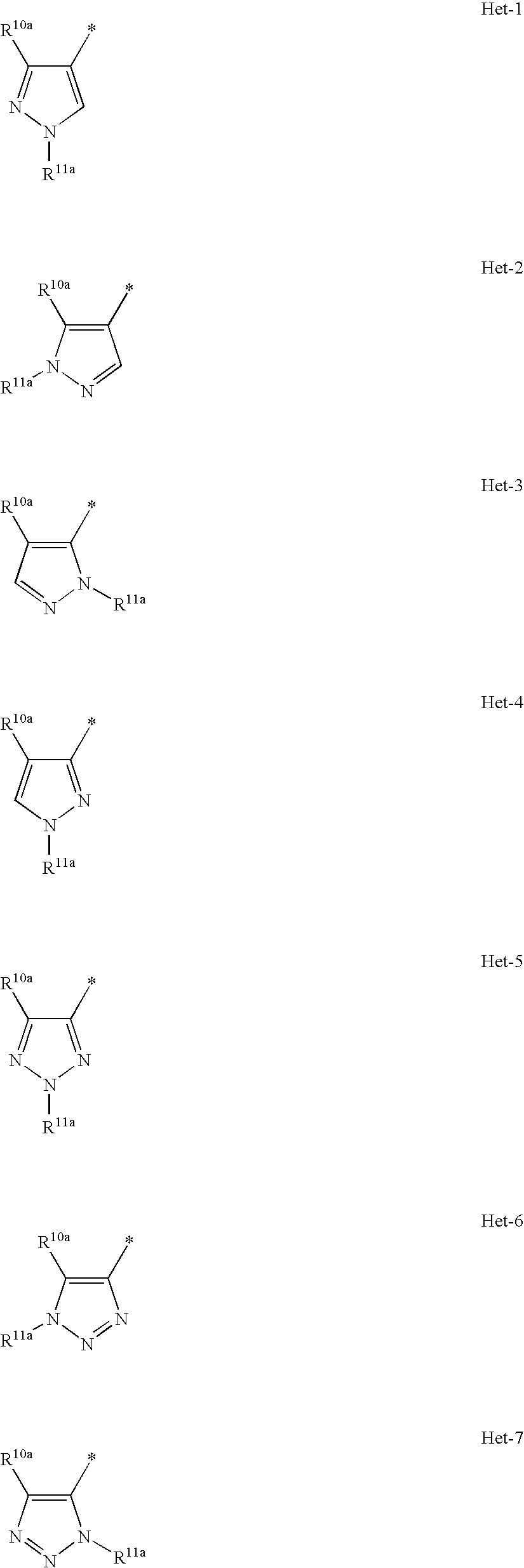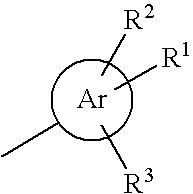Heterocyclic compounds as positive modulators of metabotropic glutamate receptor 2 (mGlu2 receptor)
a technology of metabotropic glutamate receptor and heterocyclic compounds, which is applied in the direction of heterocyclic compound active ingredients, drug compositions, biocides, etc., can solve the problems of side effect liabilities, limited usefulness of such approaches, and unsatisfactory receptor binding profile and/or pharmacological profile, so as to enhance the function of receptors, and increase the response of mglu receptors
- Summary
- Abstract
- Description
- Claims
- Application Information
AI Technical Summary
Benefits of technology
Problems solved by technology
Method used
Image
Examples
preparation examples
[1114]Abbreviations used in the Examples that follow are: DCM dichloromethane; DMA N,N-dimethylacetamide; DMSO dimethylsulfoxide; MeOH methanol; TFA trifluoroacetic acid; MP-CNBH3 macroporous cyanoborohydride
example 1
1-{4-[(Thiophen-3-ylmethyl)amino]phenyl}-butan-1-one
[1115]In a 20 mL vial, to a solution of 1-(4-aminophenyl)-butan-1-one (19.64 mg, 0.1 mmol) in DCM / MeOH (0.7 mL) was added a solution of thiophene-3-carbaldehyde (22.4 mg, 0.2 mmol) in DMA (0.8 mL). A solution of acetic acid (18 mg, 0.3 mmol) in DCM / MeOH (0.7 mL) was added, followed by the addition of 160 mg of MP-CNBH3 resin (3 eq.; subst. 2.25 mmoles / g). The vial was capped and was then heated with shaking overnight at 55° C. The progress of the reaction was monitored by LC / MS. After completion of the reaction, the reaction mixture was concentrated to dryness. The residue was dissolved in 1:1 DMSO / MeOH. Purification by reverse phase HPLC (TFA method) gave the title compound.
[1116]1H-NMR (500 MHz, DMSO-d6 / D2O) δ ppm 0.89 (t, 3H), 1.53-1.63 (m, 2H), 2.78 (t, 2H), 4.31-4.37 (m, 2H), 6.63-6.67 (m, 2H), 7.09 (dd, 1H), 7.31-7.37 (m, 1H), 7.45-7.49 (m, 1H), 7.69-7.75 (m, 2H);
[1117]MS (ESI) positive ion 260 (M+H)+; negative ion 258 (M−H...
example 2
1-(4-{[5-(2-Chlorophenyl)-furan-2-ylmethyl]amino}phenyl)butan-1-one
[1118]Following a procedure analogous to Example 1, but using 5-(2-chlorophenyl)furan-2-carbaldehyde instead of thiophene-3-carbaldehyde the title compound was prepared.
[1119]1H-NMR (500 MHz, DMSO-d6 / D2O) δ ppm 0.90 (t, 3H), 1.55-1.64 (m, 2H), 2.81 (t, 2H), 4.43-4.46 (m, 2H), 6.51 (d, 1H), 6.72-6.78 (m, 2H), 7.07 (d, 1H), 7.29-7.36 (m, 1H), 7.41-7.45 (m, 1H), 7.54 (dd, 1H), 7.74-7.78 (m, 2H), 7.80 (dd, 1H);
[1120]MS (ESI) positive ion 354 (M+H)+; negative ion 352 (M−H)−.
PUM
| Property | Measurement | Unit |
|---|---|---|
| temperatures | aaaaa | aaaaa |
| temperatures | aaaaa | aaaaa |
| end-volume | aaaaa | aaaaa |
Abstract
Description
Claims
Application Information
 Login to View More
Login to View More - R&D
- Intellectual Property
- Life Sciences
- Materials
- Tech Scout
- Unparalleled Data Quality
- Higher Quality Content
- 60% Fewer Hallucinations
Browse by: Latest US Patents, China's latest patents, Technical Efficacy Thesaurus, Application Domain, Technology Topic, Popular Technical Reports.
© 2025 PatSnap. All rights reserved.Legal|Privacy policy|Modern Slavery Act Transparency Statement|Sitemap|About US| Contact US: help@patsnap.com



